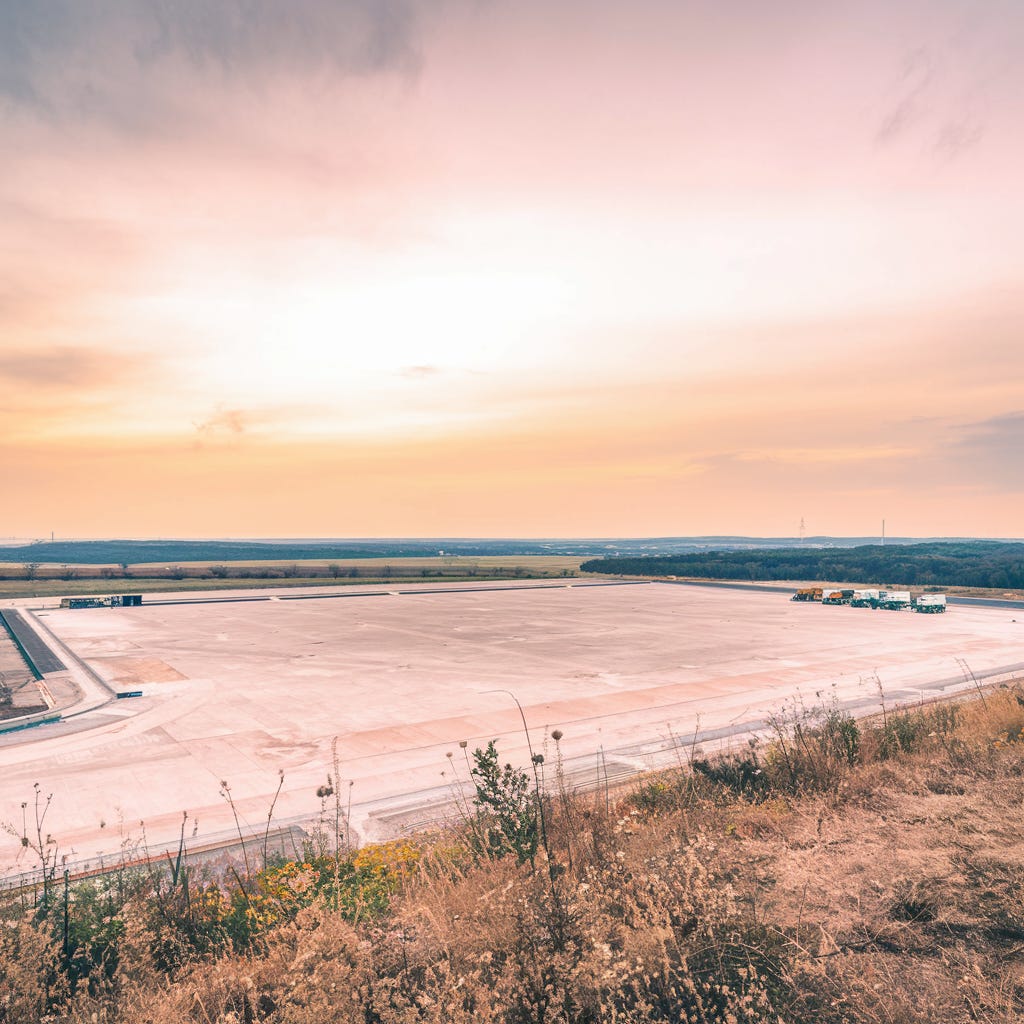Land Is the New Bottleneck: Why Tier-1 Markets Are Becoming Data Center Dead Zones
Land shortages in Northern Virginia, Singapore, London, and Frankfurt are reshaping the global data center map. Here’s how smart capital is adapting and why slow movers may never catch up.
Welcome to Global Data Center Hub. Join 1000+ investors, operators, and innovators reading to stay ahead of the latest trends in the data center sector in developed and emerging markets globally.
The global data center boom has been fueled by a familiar strategy: build big, build fast, and build where demand is highest.
But that playbook is starting to fall apart.
Across the world's premier data center hubs (Northern Virginia, Singapore, Silicon Valley, London, Amsterdam) the most valuable resource isn’t GPUs or cooling systems.
It’s land.
The industry has run headfirst into a physical and regulatory wall. And the result is a high-stakes recalibration for every serious digital infrastructure investor.
This post unpacks:
Why land scarcity in Tier-1 markets is the next big bottleneck
The hard data behind cost inflation and project delays
How smart investors are already pivoting to maintain advantage
Let’s break it down
THE PREMISE
Tier-1 markets used to mean certainty.
High demand, deep interconnection, institutional backing.
Now they mean:
Bidding wars for parcels near substations
Zoning board battles
3-to-5 year delays just to get from site control to shovels in the ground
Here’s what the data says:
Silicon Valley: 5 MW total vacant capacity. 1.6% vacancy.
Northern Virginia: Land prices top $1M per acre. Power may run out by 2027.
Singapore: Less than 4 MW of available capacity. Moratoriums capped new development for years.
The premium markets are boxed in.
And it’s happening at the worst possible time: just as AI workloads drive demand for massive new campuses.
THE CORE INSIGHT
You can’t scale what you can’t build.
In Tier-1 markets, the core ingredients (land, power, and permits) are in short supply.
Let’s break it down:
What used to be a development checklist is now a gating function.
And the risk isn’t just economic, it’s existential for smaller players.
THE COST DYNAMICS
Land shortages don’t just slow projects.
They reshape the math.
Rental Rate Inflation
Singapore: $315–$480/kW/month
Northern Virginia: Asking rates jumped 12.6% YoY
CapEx Distortion
Covered land plays: Developers buy existing commercial buildings just to demolish them
Utility coordination adds millions in early-stage risk
Time-to-Delivery Risk
In many Tier-1 markets, you’re looking at 3–5+ years to energize a site
Pre-leasing cycles can’t keep up with infrastructure delays
Barriers to Entry
Hyperscalers and PE-backed developers dominate auctions
Smaller operators are priced out before they even bid
Land isn’t just expensive. It’s scarce.
And in digital infrastructure, scarcity is leverage.
THE STRATEGIC SHIFT
Here’s what smart capital is doing to adapt:
1. Migrating to Tier-2 Markets
Markets with land, power, and friendlier regulators are absorbing spillover demand.
Columbus, Ohio: Strong power grid and tax incentives
Reno, Nevada: Proximity to West Coast without the zoning nightmares
Charlotte & Atlanta: Emerging as regional connectivity hubs
Warsaw, Madrid, Lisbon: Europe’s next digital hotspots
Atlanta beat Northern Virginia in net absorption for the first time ever in 2024.
2. Going Vertical + Brownfield
In landlocked metros, developers are:
Building multi-story data centers (Tokyo, Singapore, Silicon Valley)
Repurposing warehouses, malls, and industrial sites
Costs are 20–30% higher per MW, but that’s often cheaper than fighting zoning boards or relocating fiber infrastructure.
3. Land + Power Pairing
The best parcels now come with a power advantage.
Think of it like oil exploration: the real value is what's underground (or above ground, in this case, transmission lines and substation access).
Gigawatt-scale campus potential is a gating criterion for hyperscaler RFPs
Microsoft’s $3.3B acquisition of 173 acres in Wisconsin wasn’t just about land, it was about access to grid capacity and scale
LOOKING AHEAD
The pressure on Tier-1 markets isn’t going away.
AI, cloud, and enterprise workloads are just getting started.
So what should investors do?
If you’re investing in Tier-1 markets:
Bank land now
Prioritize utility coordination and entitlements
Prepare for longer holding periods and bigger upfront costs
If you’re moving into Tier-2:
Move quickly—connectivity and talent are catching up
Secure land with substations or nearby transmission infrastructure
Build local relationships early with zoning and permitting agencies
If you’re AI-focused:
Don’t assume hyperscaler co-location will solve everything
You need land + power + fiber—and not necessarily in traditional markets
Explore campus partnerships and modular builds in secondary metros
This isn’t about buying cheap land.
It’s about securing strategic land that unlocks infrastructure at scale.
FINAL TAKE
The land constraint is real. But it’s also an opportunity.
If Tier-1 markets were the foundation of the last wave, Tier-2 markets—and the investors who control their growth corridors—will define the next.
In this new era, connectivity is still a moat.
But land is now the gate.
And the smartest money is already on the other side.


